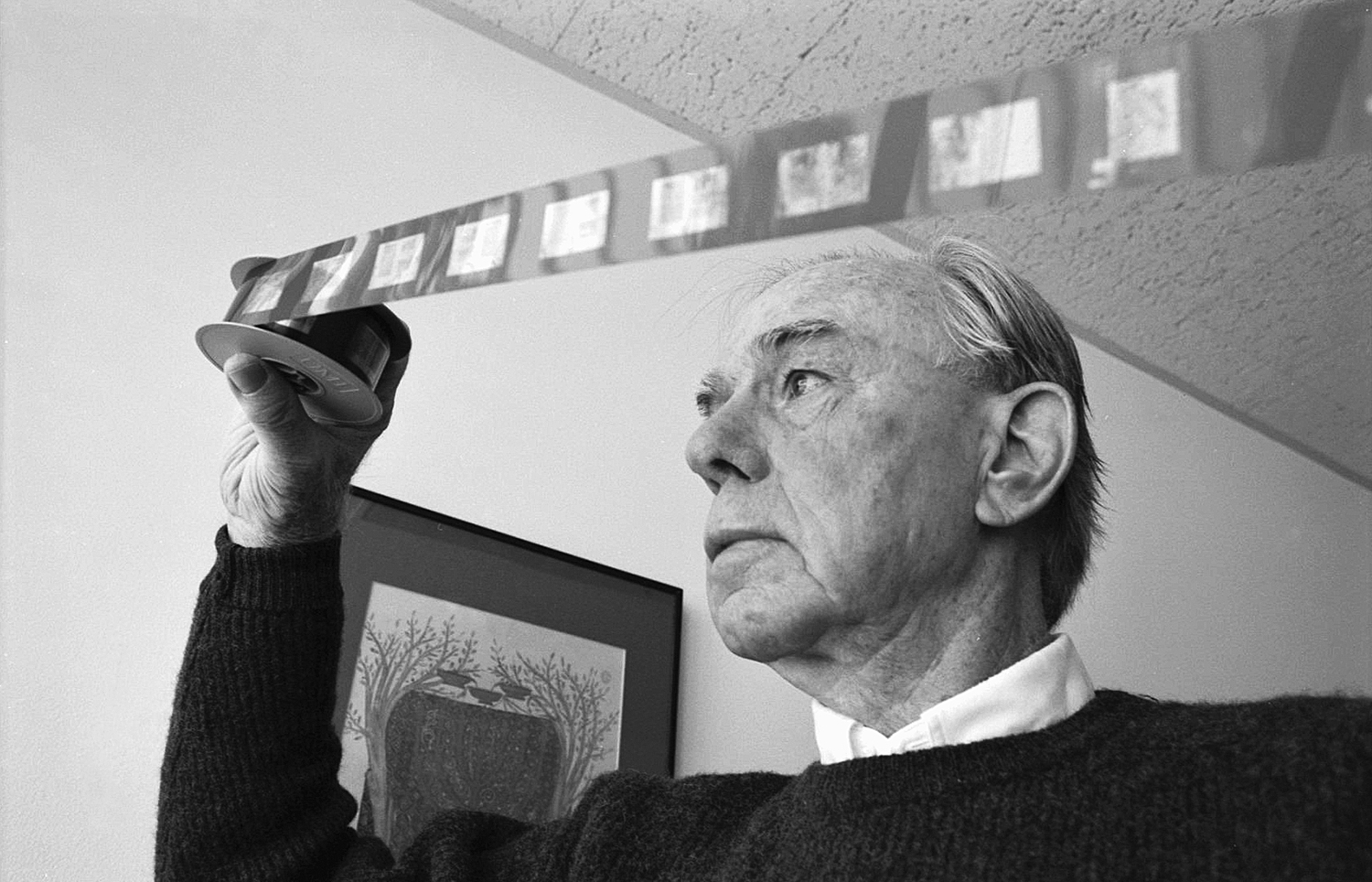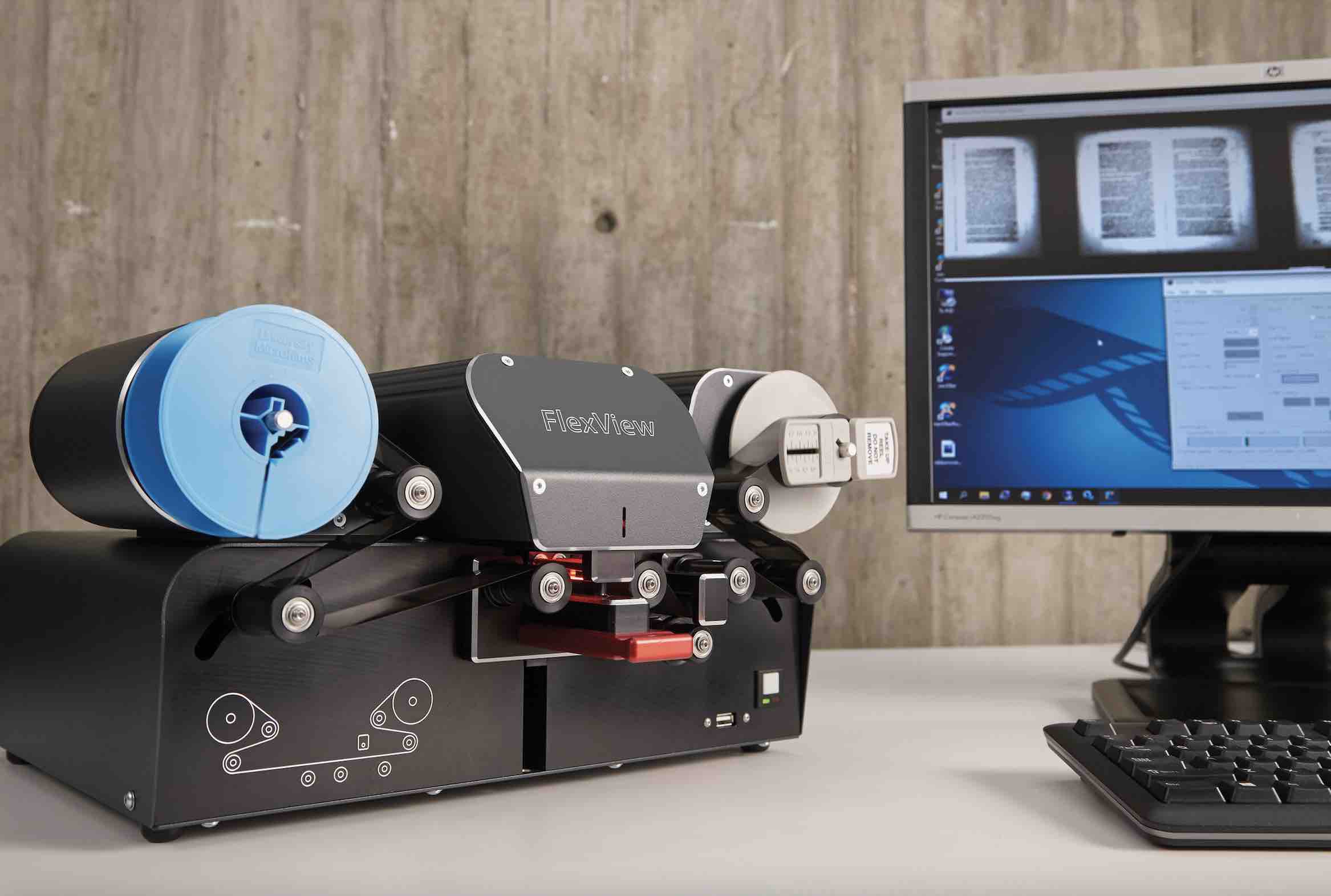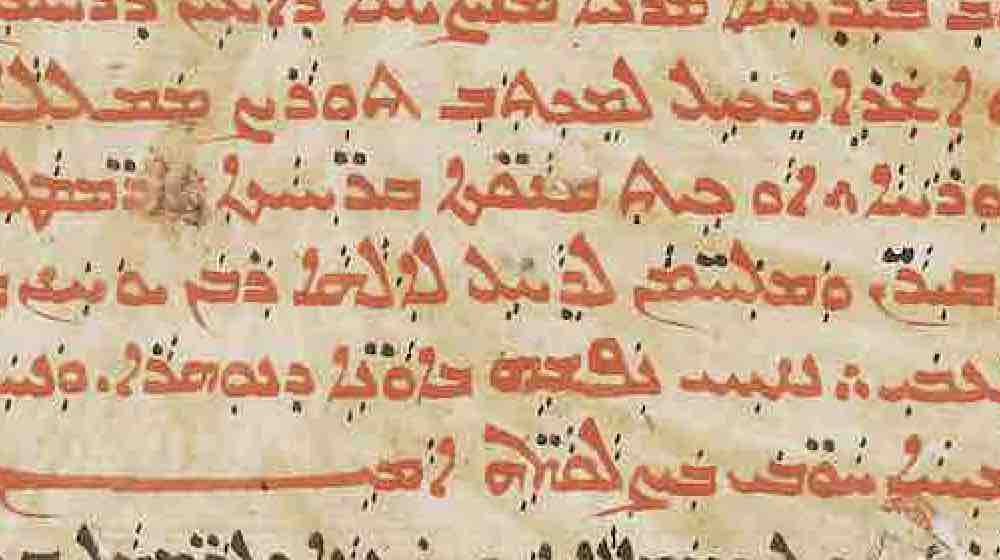New Scanner Is A Quantum Leap For Digitizing Microfilm At HMML
New Scanner is a Quantum Leap for Digitizing Microfilm at HMML

Microfilm was used by HMML to preserve images of manuscripts from 1964 until the early 2000s. Similar to other analog film formats, microfilm is made of a long strip of transparent material divided into frames. Each frame can hold a single image, and the film strip is wound on a small reel for compact and safe storage.
Page by page, each manuscript was photographed onto microfilm. A reel of microfilm made by HMML may contain anywhere from a single manuscript to many manuscripts, depending on the length of the reel and how many manuscripts it took to fill the reel. Each frame most often preserved either a single page of a manuscript or a two-page spread of a manuscript.
Reading images on microfilm requires the use of a specialized device and must be done on-site at HMML. In contrast, digital files can be uploaded to HMML Reading Room, available to anyone with internet access. It has long been a goal at HMML to convert the many thousands of microfilmed manuscript images into digital format to make them fully accessible to all, but the process of converting microfilm to digital has been a slow one. Until now.
For many years, HMML used a microfilm scanner that digitized images one frame at a time. A few months ago, thanks to a generous gift from a longstanding supporter, HMML purchased a new scanner—the FlexView 300—which can digitize an entire reel of microfilm in minutes. Work that would have taken two people several weeks to complete can now be done by one person in one day, and the digital images produced by the new scanner are of a significantly higher quality.

The pace of microfilm digitization is already breaking records at HMML. Using the new scanner, Jeff Zumwalde, digitization technician at HMML, digitized 188 microfilms, encompassing a total of 51,158 individual frames, in the month of October 2021. In November 2021, he digitized 207 microfilms, with a total of 41,322 frames. In comparison, using the old scanner in November 2020, HMML digitized only 28 microfilms, at a total of 7,539 frames.
This has enormous implications for the accessibility of microfilmed collections, such as the incomparable Ethiopian Manuscript Microfilm Library (EMML). Wayne Torborg, Director of Digital Collections & Imaging at HMML, explained the value of the new scanner this way: “The FlexView 300 scanner has made the impossible possible for HMML. It has transformed the quality of our work, our productivity, and the real impact we can have on the world.”
This story originally appeared in the Winter 2021 issue of HMML Magazine.




